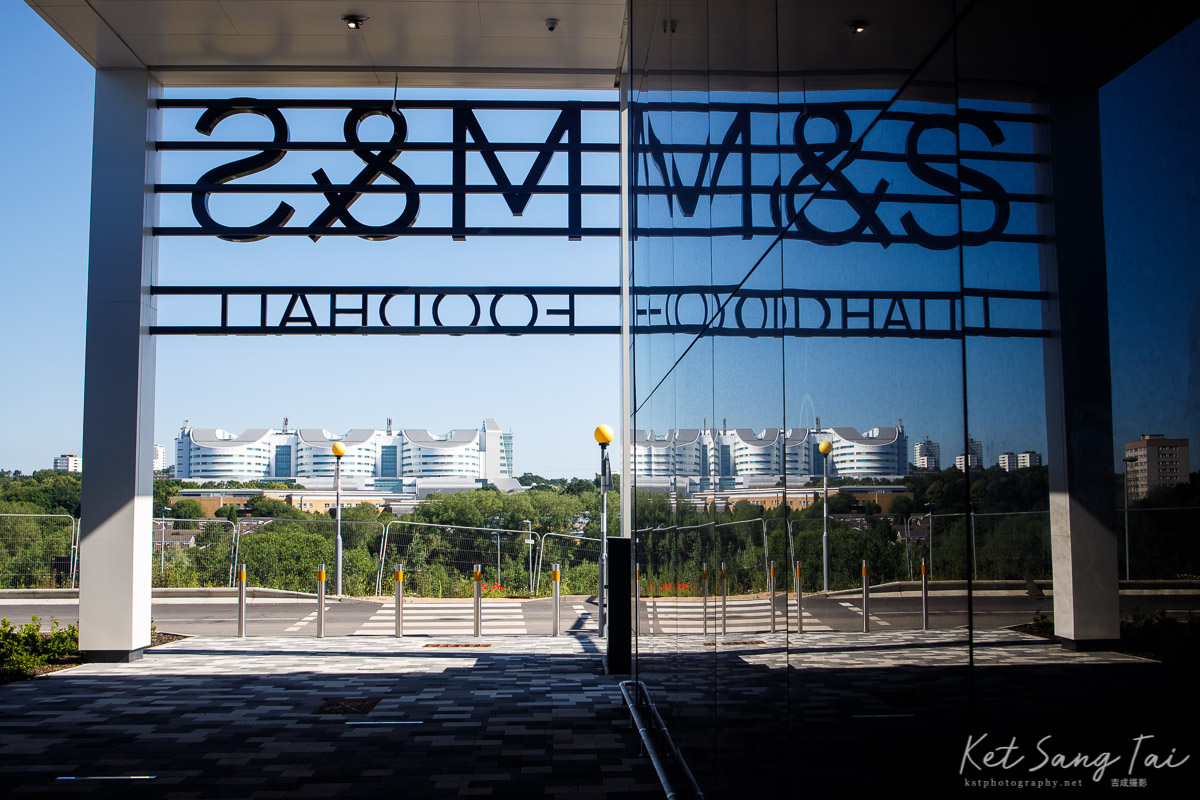Welcome to WordPress. This is your first post. Edit or delete it, then start writing!
Uncategorized
Making Big Print
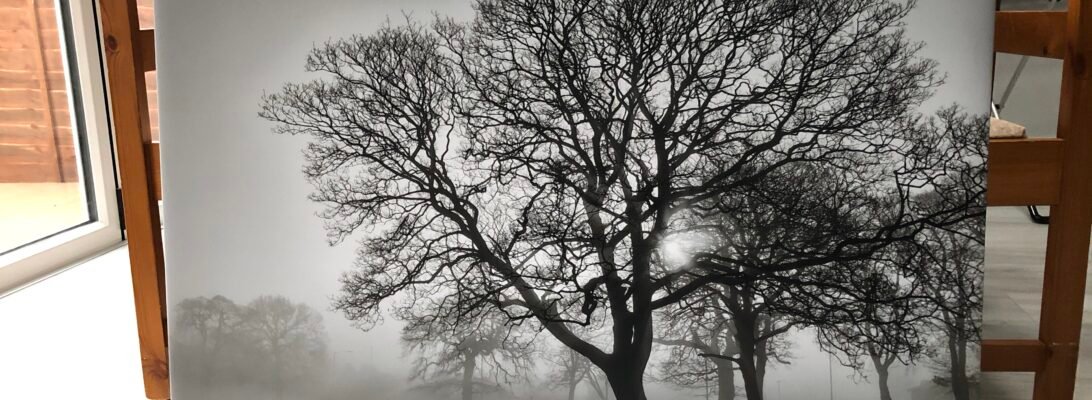
I still remember when I first started photography, all my photos were in prints. Maybe I am old, but I feel that looking at prints is very different from looking at a phone or computer screen. In fact, the switch from film to digital has eroded my interest in photography so much that I didn’t do any photography for a few years.
Nowadays we all got used to looking at our photos on a screen. However, a lot of photographers like myself feel that we should print our photos more. I guess one of the limiting factors is cost. Printing is not cheap, especially if you want to make a bigger print.
Recently, we moved into a house where there was a TV on a wall with pre-installed cables. We decided not to have a TV in our house, but the sight of hanging cables is not very inviting. I came up with an idea of covering it up with a large canvas print. The reason for canvas is that I will have space behind the frame to hide the cable.
After looking through all my photos, I found this one I like. It was taken on a misty one morning on the way to work. Here is the original photo.
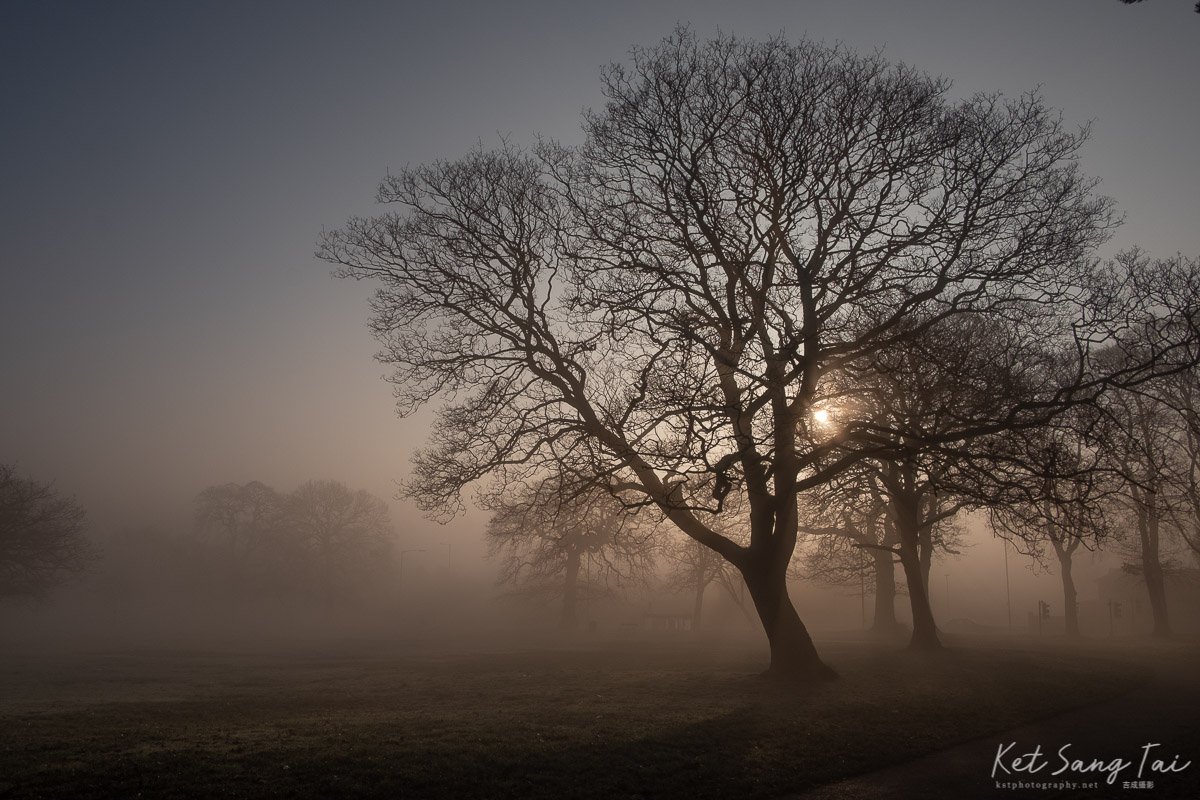
I quite like the colour, but my wife and I both agreed that we should have a black and white wall art. So I spent sometimes converting it to black and white using Silver Efex Pro and a bit of cropping. I found a great Christmas offer which allowed me to make big 40 x 30 inches print at a very reasonable price.
After three weeks wait, I finally got it delivered this week. I was delighted with the quality. This photo was taken with a Fujifilm X-T20 and the humble XF18/2 and it is definitely good enough to this print size.

Now I have it on my wall and I no longer have to look at those untidy cables coming off the wall.
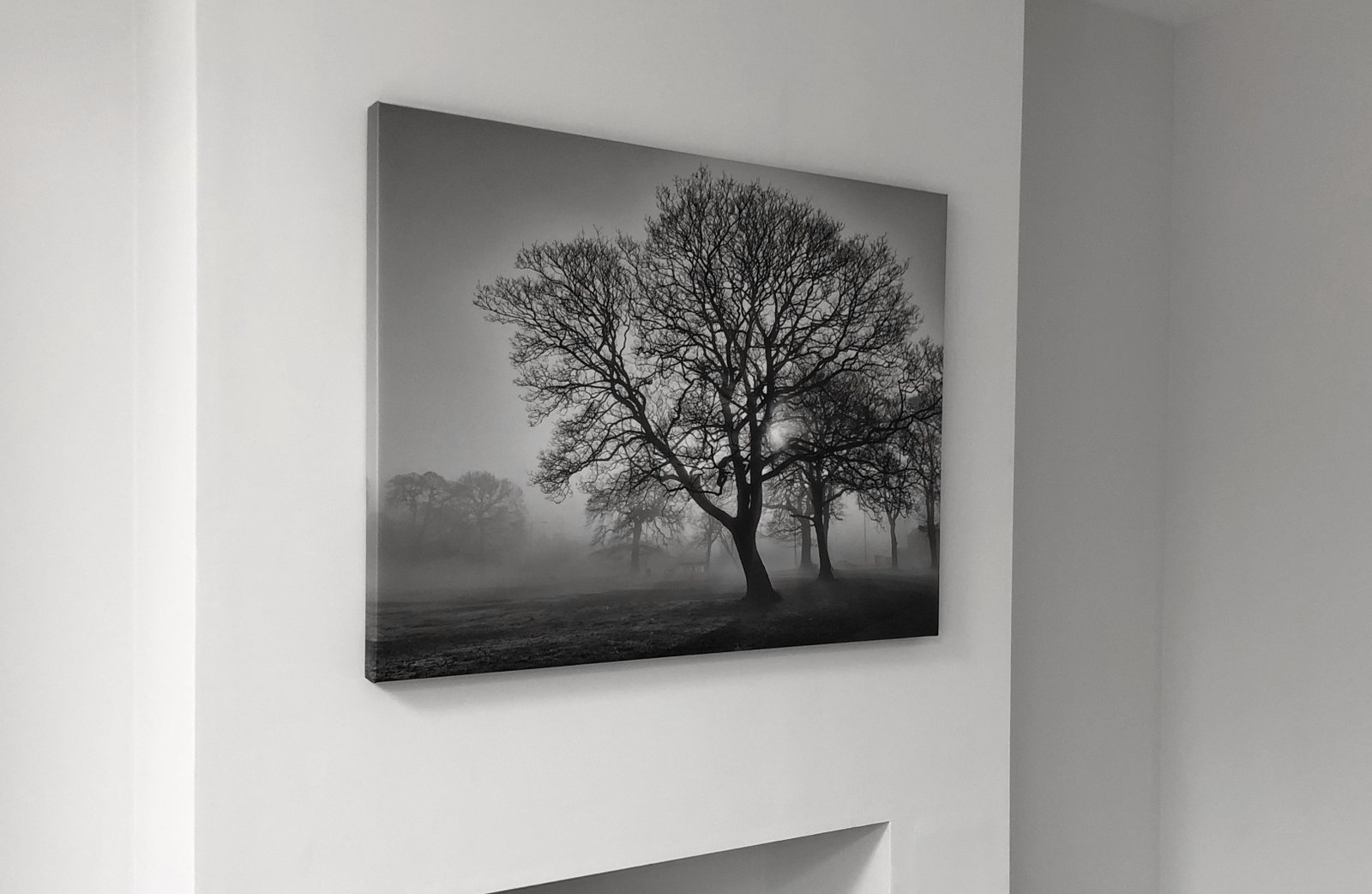
Every time I make a print, I feel very happy and satisfied. I should definitely print my photos more.
Food, food, food…….
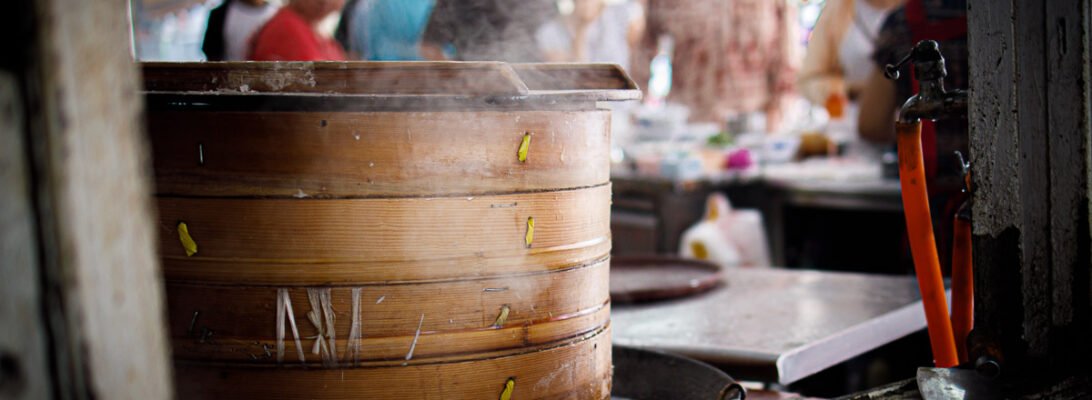
Being a Malaysian who came to UK 16 years ago and having a wife who came from Taiwan at around the same time means making trip to Malaysia and Taiwan has become our yearly event. It used to be just two of us but now we have two little boys to bring along. Bringing two young kids on 14 hours long haul flight one way plus many internal flights and train is no easy task. Despite that, I always bring my favourite camera with me to capture as much of the good memory as I can.
One of the highlights of the trip (the other highlight is of course time spent with family and friends) is the fantastic Taiwanese and Malaysian food. Naturally that become one of my favourite photography subjects for the trip.
On the trip this July, I brought my EOS R with the new RF35mm macro with me. This became a formidable combo. 35mm is great for general photography and environmental portrait of the kids. The half life size macro feature is also great for food photography. I also brought the the RF24-105mm which sat in my camera bag most of the time.
Here are few pictures of the fantastic food I had during the trip. I do some lots more which I haven’t got the time to edit.
3 Lenses Which Made Me Buy The EOS R

It is always my view that we shouldn’t choose a camera based on the specification sheet or which one has the latest bells and whistles. Having the best camera doesn’t make us a better photographer. Although I have to admit that if you are already an excellent photographer, there is nothing wrong with wanting the best and latest equipment. For the majority of people who are learning the skill and art of photography, it is better to choose a camera based on 2 factors, ie personal need, and lens selection.
Today I want to give you my personal reasons why I have chosen the EOS R as my main camera because of its lens selection. I used to shoot with a Canon DSLR. 5 years ago, I switched to Fujifilm for its smaller size. Later on, I couldn’t resist the lure of 42mpx sensor and ended up with a Sony camera. Very soon I found out that I don’t need 42mpx files and it was slowing down my post-processing and clogging up my hard drives. I could have downgraded to a 24mpx Sony camera but I decided to get the EOS R because of the following 3 lenses available on the Canon system.

RF 24-105mm f/4 IS
I want this lens as an all-round travelling and personal lens to cover everything from landscape to portrait. This is one of the best all-round zoom available in the market, regardless of brand and system. Fujifilm’s XF18-55mm is affordable, small and of excellent optical quality and I really enjoy using it. However, for me, 28mm equivalent is not wide enough for landscape. 82.5mm equivalent with f/4 aperture on APS-C sensor does not give me enough background blur for portrait. It is also not weather resistant. Fujifilm’s XF 16-55mm f2.8 can give me the 24mm focal length and being f2.8 at 82.5mm equivalent is not bad. However, there is no image stabilization in both the lens and most Fujifilm camera bodies. I could have used it on the X-H1 which has IBIS, but this combo will be similar in size and weight to the EOS R and RF 24-105mm with a smaller sensor and shorter at the long end. Sony’s FE 24-105mm is almost as good as the Canon counterpart but it doesn’t come as part of a kit which means it is a lot more expensive to buy. All in all, EOS R coupled with RF 24-105mm seems to be the perfect combo for every day all-round shooting.
Pictures below just show how versatile this lens is.


RF 35mm f1.8 Macro
On the days when I want to keep everything light and simple, I like to just have one camera with one prime lens. I have always been looking for a small prime lens with wide enough aperture and good close focusing capability. Fujifilm’s 23mm and 35mm f1.4 give you excellent bokeh of f2 full-frame equivalent, but close focusing capability is far from impressive. The f2 version can focus closer but on APS-C body, f2 is not good enough for low light shooting and for blurring out the background, for me at least.
In the Sony world, I have enjoyed using the 35mm f2.8 (I used the Samyang one, not Zeiss) and FE 50mm f2.8 macro. I loved the 35mm for its small size but it doesn’t focus very close and f2.8 for a prime is a bit slow. I loved the 50mm because it is a 1:1 macro. It is very handy to have a walk around prime lens which is also a macro lens. Again, f2.8 just doesn’t cut it for a prime, especially in low light situation and for portrait.
When Canon first announced the RF 35mm macro, I was so excited. Finally, someone is making a lens which is exactly what I need. 35mm is a very versatile and useful focal length as a walkaround prime lens. The f1.8 is probably the largest aperture possible without making the lens big and heavy. It is bright enough for low light situation and provides good enough blurred background. With regards to macro, how I wish it has 1:1 magnification. But 1:2 good enough for most day to day photography, better than all primes except dedicated macro lens. It has IS, which is great as currently, Canon has no In Body Image Stabilisation (IBIS) yet.
EF 50mm f1.2
What else can I say with this legend of a lens?

35mm and 50mm are my two favorite focal lengths. I have tried many 85mm lenses in the past but somehow, I just don’t like it as portrait lens. I like to include more surrounding in the portrait photos. As far as I know, this is the largest aperture autofocus 50mm lens in the market. The only other autofocus lens with a larger aperture is Canon’s own EF 50mm f1.0 which has been discontinued. One of the reasons I wanted full-frame camera is for the background blur and this is as good as it can get. The new RF 50mm f1.2 is a better lens but it also costs a lot more. It is on my wishlist for the future.
There you go, here are the 3 lenses which made me buy the EOS R. If I have to add a fourth one onto this list, it will probably be the EF 70-200mm f/4 IS. This lens is almost perfect optically and costs a lot less than the latest EF 70-200mm f/4 IS II, Sony FE 70-200mm f/4 and the equivalent Fujifilm XF50-140mm f/2.8.
At the end of the day, it matters less than what people think. We live in a golden era where there are a lot of excellent and affordable equipments to choose from. So it doesn’t matter what gear you use, make the most out of it to create stunning images and push the boundary of creativity.













